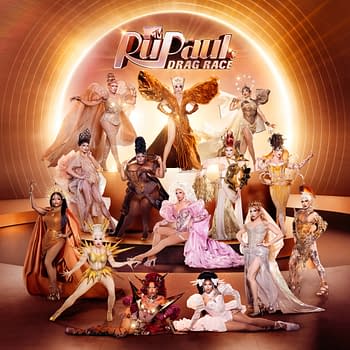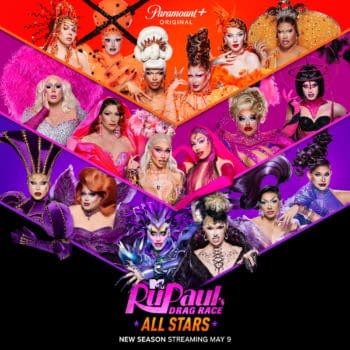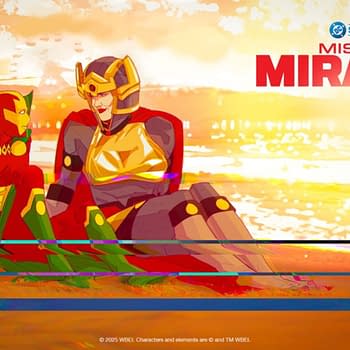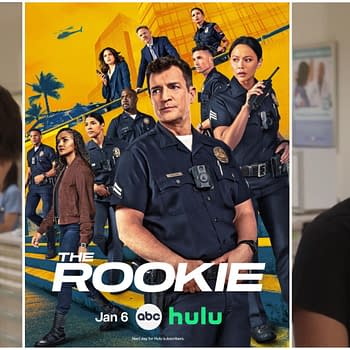Posted in: Opinion, streaming, TV, TV | Tagged: all stars, drag, drag race, LGBTQ, opinion, queens, rupaul
Drag Race International Editions Hit Viewers Differently- Here's Why
RuPaul's Drag Race, the long-running drag queen competition show, has recently branched out into international versions of the show, much like the similar Top Model franchise. Hot take: Drag Race international versions are not made for you. They are not engineered to have the same worldwide appeal as the OG franchise does. There are currently seven international iterations of the franchise in addition to the original flavor US version: Drag Race Down Under, Drag Race Espana, Canada's Drag Race, Drag Race Holland, Drag Race UK, Drag Race Thailand, and the OG spin-off series, The Switch Drag Race (Chile). I've watched a fair selection of these versions and even covered the first season of Drag Race Holland – and the shows are great, but as someone who did not grow up in the cultures of Holland, Thailand, Canada, Spain, or any of the others represented by international versions of Drag Race, I've noticed one major difference between the international versions and the original U.S. Drag Race: the international versions of Drag Race are not made for audiences outside of those countries.

Perhaps this is an obvious thing, but with the original U.S. version becoming a globally recognized and loved franchise even before the international versions, it's worth figuring out why the American version crosses to other markets, but Drag Race Thailand doesn't really make a splash in other countries outside of the hardcore Drag Race fans who keep up with every single version and spin-off.
The art of drag relies heavily on pop culture and current events – it's an art of parody; a parody of celebrities, a parody of gender stereotypes, a parody of current culture and the world. American culture for the most part enjoys worldwide exposure and recognizability; the culture of Thailand or Holland, not as much. This is why the U.S. version blew up and inspired spin-offs whereas the international versions rarely make a splash outside their home country (even with streaming on World of Wonder's site). And drag has evolved differently in each country, just as the gay culture in each country is unique and has its own history. In the UK, queens sing live – in the United States, they primarily lip sync. But that's not the main "culture shock" difference between the original American version and the international versions.
Take the Snatch Game, for example- the mock-panel show format is all about queens mimicking celebrities and using recognizable people and events as comedy fodder. In the U.S. version, the characters that queens chose have ranged from historical figures such as Mary, Queen of Scots and Harriett Tubman to current public figures such as Paris Hilton, Adele– and of course, absolute icon Cher. While these figures are globally and historically recognizable, characters featured on the international versions of Drag Race include Raven van Dorst, Cherprang Areekul, Sophia La, and Katie Price. Every version of Snatch Game will still feature American icons known the world over (like last year's Joe Exotic), but not always.

Now, perhaps you're more internationally cultured, but I'd argue that most of the audience outside the country in question will not recognize most celebs on the program- either impersonated or actually appearing. However, everyone on the show understands and is absolutely there for it – why? Because that version of Drag Race is not made for audiences outside the country in question. And it shouldn't be -there are zero reasons someone with no exposure or knowledge of Dutch culture or Thai culture should understand the references and nuances of that country's culture and community. So why are international versions being marketed globally?
Drag Race UK has enjoyed a larger American following than any of the other international versions so far (Drag Race Spain and Down Under have yet to film), likely because the UK culture is second most recognizable behind the United States. It could also be thanks to WOW's support and the chatter about Drag Race UK from notable U.S. queens and RPDR alums online and in vlogs and podcasts.
None of this is to say the international versions of Drag Race are lesser in any way – in many ways, they're better than the U.S. version, which has shifted to focus more on the personality and drama of the queens instead of the competition. They're just different, and while U.S. Drag Race can easily jump markets worldwide, that love doesn't always go the other way. It does not make you a bad fan or an unsupportive gay to not be into the other versions of Drag Race or any reality show for that matter (the international versions of Nailed It! are the same way); it just means not all television is made for all audiences and markets.
There's so much Drag Race out there, don't feel like you have to keep up with it all. That's an obsessive mentality that can form, leading to burnout because too much of a good thing is still too much. Especially with Pride month upon us, it's okay not to love and be into every single thing out there for the LBGTQ+ community. Support can also mean knowing what works for you and what doesn't- and being selective about what to watch, participate in, and experience. And since you're here…
BCTV Daily Dispatch: For a look at what's going on across the television and streaming landscape, sign up for Bleeding Cool's daily email round-up of the news you need to know here.















